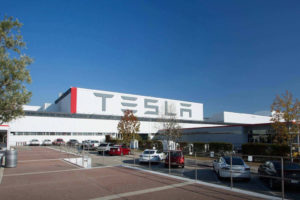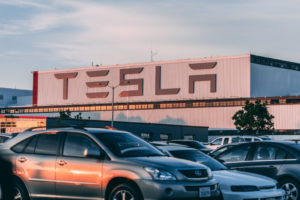When you think of Tesla, you probably imagine sleek cars, groundbreaking technology, and a certain maverick CEO. But behind the sheen of innovation, do Tesla’s assembly lines hum with the same spirit of worker solidarity found in Detroit’s heyday, or does a modern approach leave no room for the union label?
By the end of this post, you’ll know exactly where Tesla stands in the landscape of unionization and what it means for the folks on the factory floor.
Quick Takeaways:
- Tesla remains non-unionized, facing resistance from management and legal hurdles despite employee efforts to align with the United Auto Workers (UAW).
- Employees considering unionization weigh pros such as stronger bargaining power and cons including potential strikes and dues costs.
- Current union talks at Tesla are influenced by external factors like customer opinion on ethical labor practices, with change being a possible future outcome.
What’s the Deal with Tesla and Unions?
When we talk about Tesla and unions, we’re treading on some pretty contested ground. Tesla Motors, led by the ever-polarizing Elon Musk, has had a complex relationship with the concept of unionization.
Historically, Tesla has prided itself on being different from traditional automakers, and that includes its stance on labor representation. There have been various efforts by employees to organize and align with the United Auto Workers (UAW) union. However, none have yet come to fruition on the factory floors of Tesla.
Despite these efforts, Tesla has remained a non-union shop. The company maintains that its compensation package, which includes stock options and health benefits, is competitive and argues that a union would not serve the best interest of its workers or shareholders.
Why Aren’t Tesla Workers Unionized?
Digging into why Tesla workers remain non-unionized unveils a layered story. First off, resistance from upper management plays a significant role. Tesla’s brass, including Musk, has made no bones about their opposition to unionization, stating that it could stifle innovation and flexibility at the company.
Legal challenges haven’t helped the cause, either. There have been numerous charges filed with the National Labor Relations Board (NLRB), alleging that Tesla has engaged in unlawful activities to resist unionization. These activities purportedly include retaliating against pro-union employees. The company has disputed these claims but did face an order to reinstate a union-supporting employee from the NLRB.
Other barriers include Tesla’s high-tech, fast-paced work environment, which might not seem like the traditional breeding ground for union sentiment. Plus, the stock options and above-average pay for production positions dampen the urgency some workers might feel about unionizing.
Has Unionization Been Tried at Tesla?
It’s not for lack of trying that Tesla remains non-union. Let’s dive into some of the nitty-gritty of past unionization attempts.
There’s been a consistent drumbeat from certain employees and the UAW to bring unionization to Tesla’s factories. Workers have raised concerns about safety, pay equity, and working conditions. Over the years, several employees have spoken out publicly, rallies have been held, and union literature has been distributed.
In response to these efforts, Tesla management has countered with internal communications emphasizing the benefits of staying non-union and open-door policies that encourage direct communication between workers and management. Musk has also taken to Twitter (as he often does) to address the issue, sometimes in ways that have stoked controversy.
Despite the push for union representation, no successful campaigns have resulted in a unionized Tesla workplace to date. Outcomes have ranged from a fizzling of support to increased scrutiny from federal agencies over labor practices.
Unionization at Tesla is a topic that undoubtedly stirs up passionate debate on both sides. From a certain angle, it seems like a David vs. Goliath scenario, with workers seeking more influence in a rapidly growing empire. Yet the big picture remains complex, underscoring the evolving nature of labor relations in a modern and innovative industrial landscape.
Remember, the conversation around Tesla and unions isn’t just about a company and its employees; it’s about the changing tides of the American workforce and the ongoing dialogue about the role of unions today. If you’re keeping tabs on this story, strap in – it’s a dynamic one that’s bound to serve up more chapters in the years to come.
What Are the Pros and Cons of Unionizing for Tesla Employees?
When it comes to the hot topic of unionization, especially within a behemoth like Tesla, the tug-of-war between pros and cons can seem endless. For employees considering the union route, it’s crucial to weigh these factors with a keen eye.
Pros:
Stronger Bargaining Power: Let’s face it, there’s strength in numbers. Unionized workers have a better shot at negotiating for higher wages, enhanced benefits, and improved working conditions. It’s the classic case of “united we stand, divided we fall.”
Job Security: Union members often enjoy greater job security, as unions typically fight tooth and nail against arbitrary layoffs or unfair dismissals.
Worker Advocacy: Feeling like just another cog in the machine isn’t great. Through a union, employees have a collective voice, ensuring their concerns don’t just disappear into the ether.
Legal Support: If legal issues pop up, union members aren’t left to fend for themselves. They’ve got the backing of the union’s legal mavens.
Cons:
Union Dues: Sure, you might get higher wages, but remember, union representation isn’t free. Those dues will make a little nibble out of your paycheck.
Possible Strikes: When negotiations stall, strikes might occur. And while you’re holding a picket sign, you’re not earning a dime.
Less Individual Flexibility: Not everyone’s a fan of one-size-fits-all. Unionized environments often mean standardized contracts, which can be a drag if you’re after a more tailored employment deal.
Risk of Conflict: Union politics can get tricky. Sometimes, the tension between management and unions can lead to a less-than-ideal work atmosphere.
What’s the Current Climate Around Unions at Tesla?
Tesla’s been riding a rollercoaster when it comes to unions. The climate within the company’s walls can often feel as unpredictable as the stock market.
As of late, there have been rumblings about unionization attempts, but Tesla hasn’t exactly rolled out the welcome mat. Elon Musk’s historical tweets have sparked controversy, suggesting that unionizing might mean giving up stock options – something that caught the eye of the National Labor Relations Board (NLRB).
Recently, there was a significant development: a California court upheld a verdict against Tesla regarding a worker’s allegations of racial abuse. This case highlighted that while Tesla’s got a knack for innovation, it’s not immune to workplace issues.
On the flip side, Tesla promotes its above-average wage and comprehensive benefits package as a draw for prospective employees, touting these as competitive advantages over unionized automakers.
Navigating the choppy waters of labor relations has been a tall order for Tesla. While they’ve managed to steer clear of formal unionization, pressure from workers’ rights groups and environmental campaigners for a more sustainable and ethical production process could tip the scales.
One nugget that most bloggers might miss is the critical role that consumer opinion plays in this arena. As more customers prioritize ethical labor practices, Tesla’s brand image could potentially influence its approach to unions. This is where you – the consumer – might indirectly hold sway in this high-stakes game.
In the end, whether Tesla’s employees opt to unionize will come down to the old dance between worker solidarity and corporate strategy. As competition heats up, and the spotlight on workers’ rights grows brighter, all eyes will be on Tesla to see how this saga unfolds. For now, Tesla’s workforce remains non-unionized, but as we all know in the world of business, the only constant is change.






